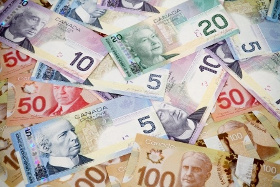The main driver for the moves of the US dollar, as well as most other currencies, this week was the quantitative easing, which weakened already weak greenback. The favorable US nonfarm payrolls allowed the dollar to return some strength yesterday, but it posted weekly losses against most major currencies.
The quantitative easing may bolster the US economy, but it weakens the US currency. The euro profited from the easing, further boosted by the claims of the European Central Bank President
The move of the US Federal Reserve worried the policy makers in other countries. It’s interesting to see how the Fed performed action, which debased the US currency, soon after on the G-20 meeting the policy makers of the participating nations agreed not to weaken their currencies. Now we can only wonder how fast Japan and other countries would follow the US, forgetting everything they promised and weakening their currencies.
EUR/USD closed at 1.4031 this week after it opened at 1.3970 and reached the weekly high of 1.4281. USD/CAD dropped from 1.0183 to 0.9999 this week. AUD/USD rallied from 0.9850 to 1.0156, erasing previous weekly losses and reaching the
If you have any questions, comments or opinions regarding the US Dollar,
feel free to post them using the commentary form below.



Be First to Comment